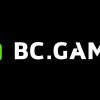Bitcoin is a trustless, distributed digital currency. However, you can also spend Bitcoin like traditional currency if a retailer or service provider accepts it as a form of payment. It’s a form of digital currency that’s based on blockchain technology, and it functions without the need for traditional banks or payment processors. Investors do have the option of simply trading it in a process that’s not wholly unlike trading stocks. Usually, sources of this funding can include bank accounts, credit cards or debit cards, though what you have the option to use varies by platform. After funding your account, you can place an order for Bitcoin. In general a transactions have one or more inputs and one or more outputs, and a transaction can increase or decrease the total number of UTXOs. This also helps during periods of network congestion because it makes it possible for wallets to create transactions that are independent from one another. Bitcoin acts as a digital currency, relying on a peer-to-peer network to log transactions and track ownership.
To operate a Bitcoin node you need to be able to do the basic accounting task of validating new transactions you see on the network. Once you sign up on the platform, you’ll need to fund your account. Typically, you’ll navigate to the Bitcoin page to begin a trade. If the conditions are met, you’ll be able to purchase the Bitcoin and either keep it on the platform or transfer it to an outside hot or cold wallet if you have one set up. In this process we started with one coin worth 12.5 BTC and ended up with two coins worth smaller amounts. I’m not prescient and I don’t have a crystal ball, but I think one of these is likely to make it into Bitcoin in the next two years (which takes into account the time it takes to build consensus around a BIP and actually deploy it).
These two new coins are “unspent transaction outputs”, or UTXOs. For example, let’s say Bob already had coins worth 1 and 2 BTC respectively. Coins are in a binary state, spent or unspent. It’s an accounts model because balances are associated with accounts. Compared to an accounts model, the UTXO model provides improved privacy, and also elegantly solves the problem of making sure balances can’t go below zero in a distributed system. Bitcoin uses a novel “unspent transaction output” (or UTXO) model. Experienced Bitcoiners will already be familiar with most of the content here, so this is more targeted at people who don’t understand the UTXO model or what the chainstate database is used for. The information about how much money everyone has right now is called the chainstate database. There are several different proposed solutions, and a number of Bitcoin developers are thinking about this problem and working on it right now. There are ways to do it, but they’re complicated and have some serious drawbacks, particularly when considering maximum transaction throughput, particularly when considering maximum transaction throughput.
It’s not so easy in a distributed peer to peer system that doesn’t have a central authority. How do you actually do that in a distributed system though? That can be a crypto trading service or a brokerage that features crypto assets like Bitcoin. Otherwise, brokerages like Robinhood and WeBull can work if you also want access to stocks, ETFs and similar assets. In this regard, it operates like cash. Essentially, you can sell it for cash on investment platforms that support it or potentially trade it for other cryptocurrencies. You can also purchase Bitcoin through PayPal if you prefer. When you purchase a stock, you’re becoming the owner of a small fraction of that business, and that gives you certain rights regarding the company’s operational decisions. Options like Coinbase, Binance, FTX and Gemini are popular if you’re looking for a crypto-specific platform. If you’re thinking about making the leap, here’s what you need to know. First, you need an account on a platform that supports cryptocurrency trading.





